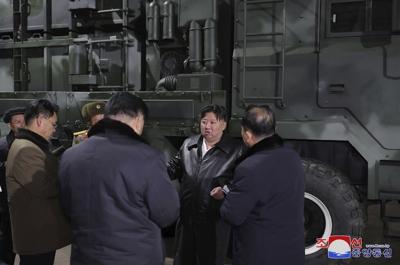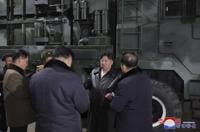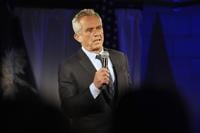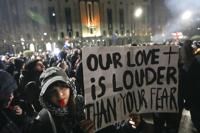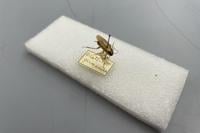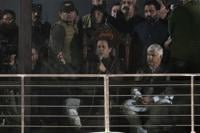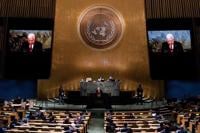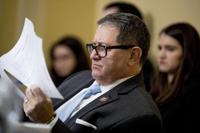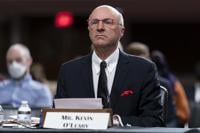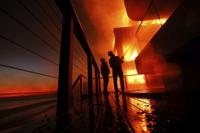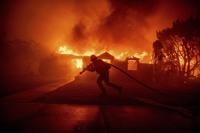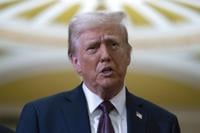SEOUL, South Korea (AP) — North Korean leader Kim Jong Un has called South Korea “our principal enemy” and threatened to annihilate it if provoked, as he escalates his inflammatory rhetoric in an election year in South Korea and the U.S.
The White House meanwhile said it has evidence that Russia had fired at Ukraine additional ballistic missiles provided by North Korea. The U.S., South Korea and their partners issued a statement Wednesday condemning both North Korea and Russia over the missile transfer.
Experts say Kim will likely further raise animosities by test-firing more missiles to try to raise stakes in the standoff with his rivals and influence the results of South Korea’s parliamentary elections in April and the U.S. presidential election in November.
During tours of munitions factories this week, Kim said it’s time to define South Korea “as a state most hostile" toward North Korea because of its long-running attempts to topple the North’s socialist system. He said North Korea must bolster its nuclear war deterrent, the North’s official Korean Central News Agency reported Wednesday.
If South Korea dares to use its military force against North Korea, Kim said, “We will have no hesitation in annihilating (South Korea) by mobilizing all means and forces in our hands,” according to KCNA.
He has made similar threats recently, and analysts say Kim likely hopes that South Korea's liberal opposition, which is seeking reconciliation with North Korea, would win the April elections. Kim apparently also believes he can win U.S. concessions if former President returns to the White House, analysts said. Kim and Trump met three times as part of high-stakes nuclear diplomacy in 2018-19.
There are concerns that North Korean provocations could trigger limited clashes between the two Koreas along their heavily armed border.
Last Friday, North Korea fired near the disputed western sea boundary with South Korea, prompting South Korea to stage its own firing drills in the same area. South Korea accused North Korea of continuing with firing drills in the area over the weekend.
Three bloody naval skirmishes between the Koreas have occurred along the disputed sea boundary since 1999, and two attacks blamed on North Korea killed 50 South Koreans in the area in 2010.
Kim’s visit to the munitions factories could also be related to North Korea’s reported supply of conventional arms to Russia in return for sophisticated Russian weapons technologies. The factories could include a missile-producing facility as KCNA said they carried out the plan for deploying new weapons to major missile units. Photos released by North Korea showed missile launch vehicles.
U.S. ���ϳԹ��� Security Council spokesman John Kirby said Tuesday that the North Korea-supplied missiles were fired on the Ukrainian city of Kharkiv on Jan. 6. The White House last week declassified U.S. determinations that the Russians fired North Korean-provided missiles on Ukraine on Jan. 2 and Dec. 30.
Kirby said that the U.S. would raise the matter at Wednesday’s U.N. Security Council meeting and underscored that the transfer of ballistic missiles from North Korea “directly violates” multiple U.N. resolutions. Russia, a permanent member of the U.N. council, supported those resolutions.
In a joint statement, the top diplomats of 48 countries including South Korea, the U.S. and Japan and the European Union said they “condemn in the strongest possible terms” North Korea’s missile exports and Russia’s use of those weapons against Ukraine.
“The transfer of these weapons increases the suffering of the Ukrainian people, supports Russia’s war of aggression, and undermines the global non-proliferation regime,” the statement said.
In a call Tuesday, U.S. national security adviser Jake Sullivan and his South Korean counterpart Chang Ho-jin condemned the reported missile transfer and committed to continuing close cooperation in support of Ukraine and the Ukrainian people, according to the White House.
___
Associated Press writer Aamer Madhani in Washington contributed to this report.
___
Follow AP's Asia-Pacific coverage at

